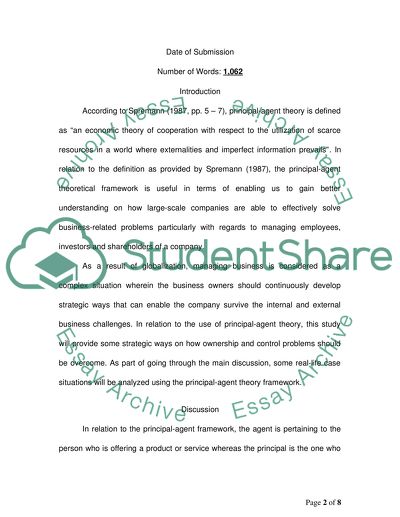Cite this document
(“Principal-agent theory provides definitive answers to how ownership Essay - 1”, n.d.)
Principal-agent theory provides definitive answers to how ownership Essay - 1. Retrieved from https://studentshare.org/miscellaneous/1574852-principal-agent-theory-provides-definitive-answers-to-how-ownership-and-control-problems-should-be-overcome-in-particular-firms-discuss
Principal-agent theory provides definitive answers to how ownership Essay - 1. Retrieved from https://studentshare.org/miscellaneous/1574852-principal-agent-theory-provides-definitive-answers-to-how-ownership-and-control-problems-should-be-overcome-in-particular-firms-discuss
(Principal-Agent Theory Provides Definitive Answers to How Ownership Essay - 1)
Principal-Agent Theory Provides Definitive Answers to How Ownership Essay - 1. https://studentshare.org/miscellaneous/1574852-principal-agent-theory-provides-definitive-answers-to-how-ownership-and-control-problems-should-be-overcome-in-particular-firms-discuss.
Principal-Agent Theory Provides Definitive Answers to How Ownership Essay - 1. https://studentshare.org/miscellaneous/1574852-principal-agent-theory-provides-definitive-answers-to-how-ownership-and-control-problems-should-be-overcome-in-particular-firms-discuss.
“Principal-Agent Theory Provides Definitive Answers to How Ownership Essay - 1”, n.d. https://studentshare.org/miscellaneous/1574852-principal-agent-theory-provides-definitive-answers-to-how-ownership-and-control-problems-should-be-overcome-in-particular-firms-discuss.


